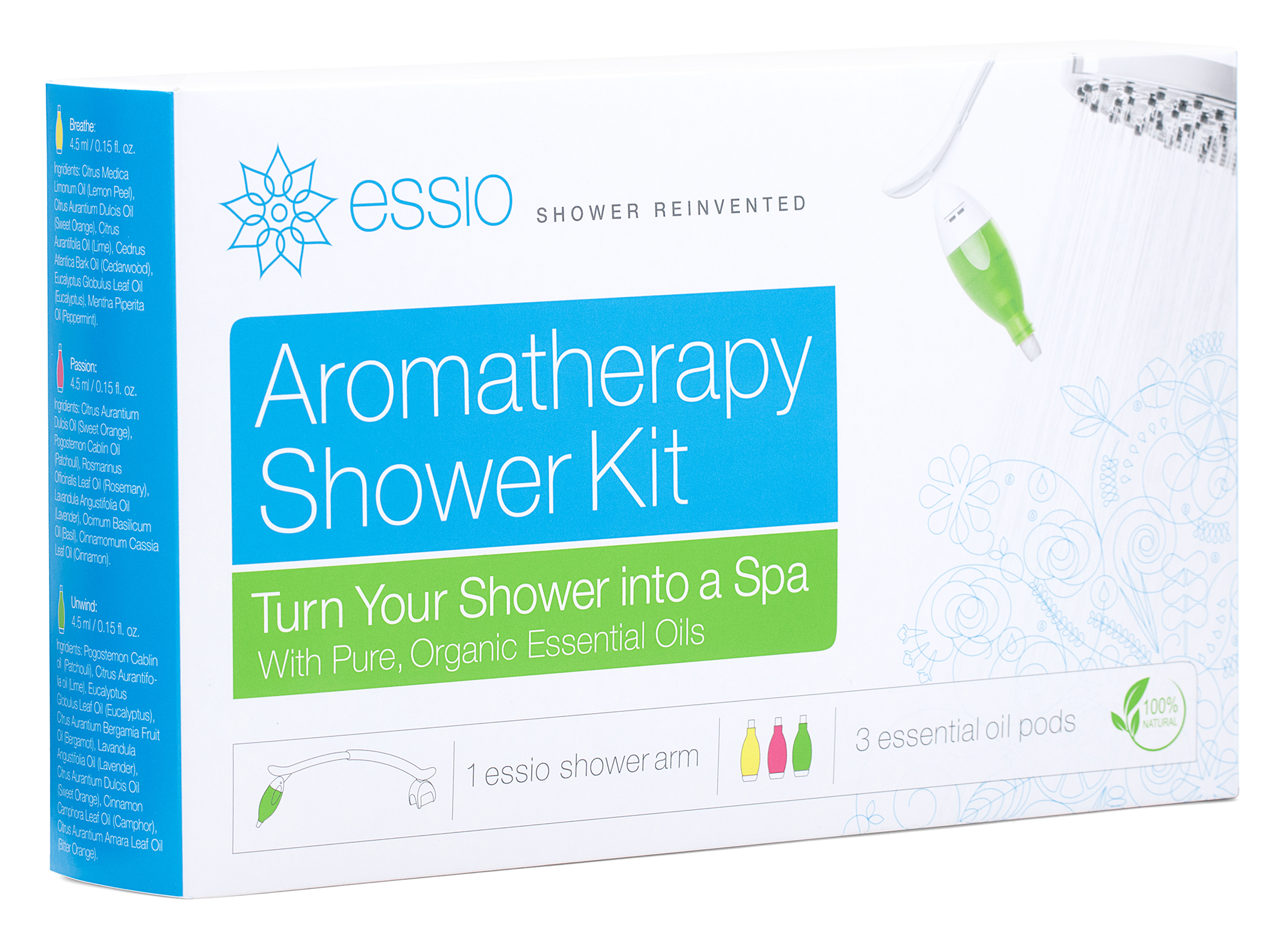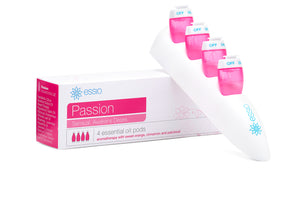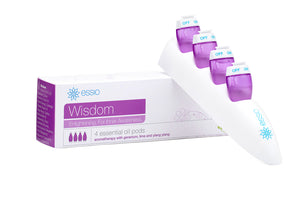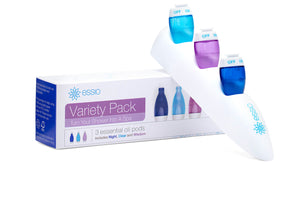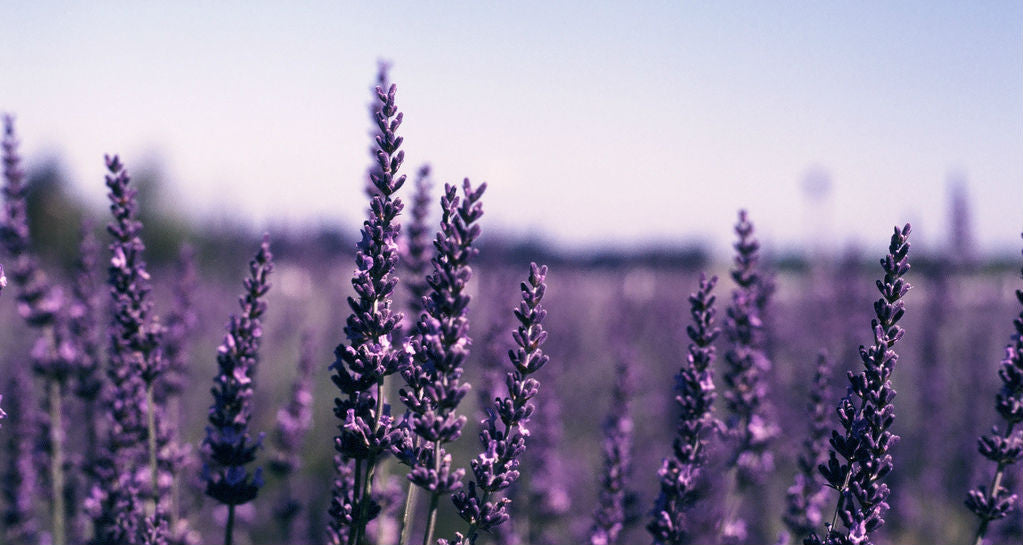
Lavender is the most beloved essential oil for aromatherapy. This essence has been used for centuries as a purifying, calming botanical ingredient—in fact, most of ESSIO’s blends are built around a base of Lavender.
There are several ways to create a Lavender-based oil, tincture or extract at home, from distilling to simply immersing Lavender buds in olive oil. Regardless of the process you choose, you will need Lavender buds and flowers. They must be organic, meaning grown without pesticides, herbicides or fertilizers.
If you grow your own (good for bees, and good for your garden), prepare to spend a few hours gently stripping the flowers off the stems between thumbnail and index finger nail. The stalks do contain the same oil, but not so much. Also, you will need to dry the buds and flowers. Do not place them in direct sunlight– in the shade or in a darkened room is best. You do this (about 24 hours) to increase your yield per batch. Dried flowers have less bulk than raw, fresh, juicy ones.
TO MAKE A TRUE ESSENTIAL OIL: Producing what is technically a true essential oil is also known as steam distilling. To make an essential oil, you have to distill the Lavender buds, capture the steam, and condense the steam into a liquid. This requires heat, pressure, equipment, skill and patience. And, distillery is where the word “still” comes from—yes, just like moonshiners. Home-distilling is not for the faint of heart. Simply: stuff can explode. Ka-boom. Generations of moonshiners used pricey copper kettles and copper coils (copper rules for its even heat-conductivity)– but if you choose the distillery route when considering how to make lavender essential oil, you may want to go with tin-coated copper, since pure copper may be reactive with various botanicals.
Producing what is technically a true essential oil is also known as steam distilling. To make an essential oil, you have to distill the Lavender buds, capture the steam, and condense the steam into a liquid. This requires heat, pressure, equipment, skill and patience. And, distillery is where the word “still” comes from—yes, just like moonshiners. Home-distilling is not for the faint of heart. Simply: stuff can explode. Ka-boom. Generations of moonshiners used pricey copper kettles and copper coils (copper rules for its even heat-conductivity)– but if you choose the distillery route when considering how to make lavender essential oil, you may want to go with tin-coated copper, since pure copper may be reactive with various botanicals.
TO MAKE A TINCTURE OR EXTRACT
A non-distilling approach to make tincture of Lavender is easier than the boiling and steaming process. You’ll need:
- Lavender buds
- Grain alcohol or cheap vodka like Popov (save the good stuff for Cosmos)
- Mortar and pestle (although bowl and spoon will do)
- Coffee filters
- Two jars– one with a tight-fitting lid
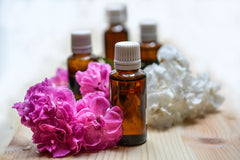 NOTE: do not substitute isopropyl / rubbing alcohol for this project. Rubbing alcohol has its own overpowering disinfectant shtank that will overpower your gentle Lavender essence. Place Lavender buds into your bowl or mortar, and crush lightly to release the aromatic oil. Just bruise the flowers with the back of the spoon or pestle. You are not making oatmeal. Too much agitation will give you Lavender soup — and that’s not how to make lavender essential oil. Transfer the Lavender to a jar with a tight-fitting lid. Cover entirely with the grain alcohol or vodka. Shake the jar to release more oil, several times a day, for several days in a row. A longer steep means more intense extraction.
NOTE: do not substitute isopropyl / rubbing alcohol for this project. Rubbing alcohol has its own overpowering disinfectant shtank that will overpower your gentle Lavender essence. Place Lavender buds into your bowl or mortar, and crush lightly to release the aromatic oil. Just bruise the flowers with the back of the spoon or pestle. You are not making oatmeal. Too much agitation will give you Lavender soup — and that’s not how to make lavender essential oil. Transfer the Lavender to a jar with a tight-fitting lid. Cover entirely with the grain alcohol or vodka. Shake the jar to release more oil, several times a day, for several days in a row. A longer steep means more intense extraction.
After a week or so of this– a short-cut during this phase of how to make lavender essential oil is to leave the “brewing” jar on a sunny kitchen counter for a weekend — you’re ready to refine. Use a coffee filter to strain the liquid and into the second jar. (The pour-off is technically lavender-infused vodka, though we don’t recommend drinking it.)
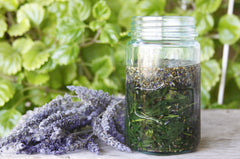 Place a clean coffee filter or cloth on top of the jar of liquid and allow it to sit undisturbed for about one week. This will allow the alcohol to evaporate from the jar, leaving essential oil as the result.
Place a clean coffee filter or cloth on top of the jar of liquid and allow it to sit undisturbed for about one week. This will allow the alcohol to evaporate from the jar, leaving essential oil as the result.
There may be sediment at the bottom, which is no big deal. If it bothers you– for instance, if you’re gifting the jar, strain it again with a clean coffee filter into a lidded storage jar. We like using dark-colored glass (like a repurposed yeast jar) to protect the actives in the oil. Store it in your pantry or linen closet, out of direct sunlight.
TO-MAKE LAVENDER-FLAVORED OLIVE OIL:
If youngsters are asking how to make lavender essential oil, there is a much simpler method which is fun as a school project.
No boiling needed. No distilling. No “Breaking Bad” flashbacks. No risk of blowing your house clean out of your zip code. This technique consists basically of picking the buds from the stems or purchasing processed Lavender buds and flowers, placing them in a jar and adding olive oil. This is simple lavender-olive oil, and may be enjoyed as a hair and skin moisturizer.
